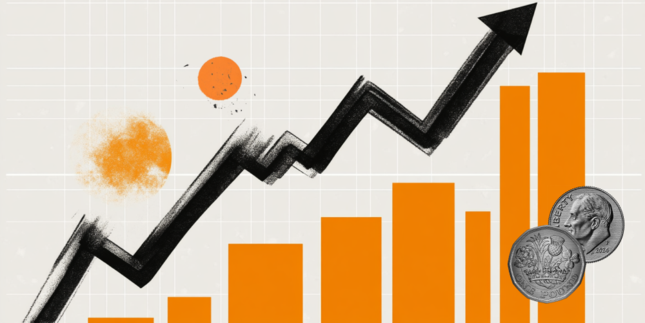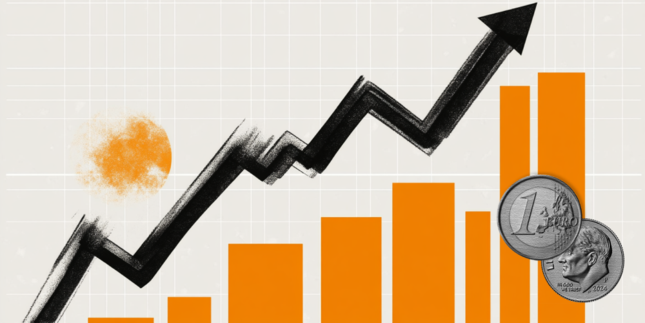US Dollar tries to push through to 103.00 in the DXY on Monday
- The Greenback sticks to Friday's recovery message and refrains from dropping lower.
- Equities meanwhile plunge with losses between 2% to 5% on average across Europe and the US, Chinese Hang Seng down 13%.
- The US Dollar Index trades near 103.00 and sees a technical rejection still play out.
The US Dollar Index (DXY), which tracks the performance of the US Dollar (USD) against six major currencies, tries to cling onto Friday's recovery towards 103.00 at the time of writing on Monday while markets are on fire. Markets were selling the US Dollar again as Equities, Yields and precious metals dropped lower. The concern comes after US President Donald Trump said over the weekend that he will be sticking to his tariffs plan, while financial backer and billionaire Bill Ackman warned the President that he is losing business leaders’ confidence.
On the economic front, all eyes will be on the US Consumer Price Index (CPI) data this week. The March inflation gauge will be the first release where some impact from the Trump administration might already be expected. In several weekly summaries issued on social media, the White House proclaims that Trump has successfully lowered prices on all food items, such as eggs or petrol at the pump. This can be seen and proven by the upcoming CPI release on Thursday.
Daily digest market movers: Fake News
- White House adviser Kevin Hassett said according to CNBC that Trump was considering a 90-day pause in tariffs for all countries except China. Stocks then slid again after the broadcaster cited the White House as saying the pause comment was "fake news".
- At 15:30 GMT, the US Treasury will launch a 3-month and a 6-month bill.
- Founder and chief executive officer (CEO) of Pershing Square Capital Management William Albert Ackman asked President Trump on the social media platform X to pause the current trade tariffs in order to first broker a trade deal. Ackman warns that Trump is losing business leaders' confidence, Reuters reports. Ackman is considered as one of his most significant financial contributors in both terms.
- Red numbers not been seen for a long time in the Equity markets, with the Chinese Hang Seng closing off at -13%, European indexes facing on average more than 6% drops, and US futures trying to salvage the situation by only correcting around 3%.
- The CME FedWatch tool sees chances for an interest rate cut by the Federal Reserve (Fed) in May standing at 46.2%, shooting up from 33.3% on Friday as rate cut bets grow. For June, a rates-remaining-steady scenario is out of the options. Only rate cuts are being penciled in with a 53.5% chance of policy rate being cut to the 3.75%-4.00% range from the current 4.25%-4.50%.
- The US 10-year yields trade around 4.10%, off its fresh five-month low at 3.85%. The next low to be considered comes in at 3.69%, last seen at the beginning of October 2024.
US Dollar Index Technical Analysis: Hard bargain
A firm technical rejection unfolded in the DXY index at the start of the week in early Monday. The recovery on Friday could not cross back to the 103.18 pivotal level. Unfortunately, that is where the recovery stopped, meaning that 103.18 on is a level which US Dollar bears are heavily defending.
The first level to watch out for is thus 103.18, which was held as support throughout March and triggered a technical rejection on Friday. Above there, the 104.00 round level and the 200-day Simple Moving Average (SMA) at 104.87 come into play.
On the downside, 101.90 is the first line of defense and it should be able to trigger a bounce as it has been able to hold the last two trading days. Maybe not on Monday, but in the coming days, a break below 101.90 could see a leg lower towards 100.00.

US Dollar Index: Daily Chart
Tariffs FAQs
Tariffs are customs duties levied on certain merchandise imports or a category of products. Tariffs are designed to help local producers and manufacturers be more competitive in the market by providing a price advantage over similar goods that can be imported. Tariffs are widely used as tools of protectionism, along with trade barriers and import quotas.
Although tariffs and taxes both generate government revenue to fund public goods and services, they have several distinctions. Tariffs are prepaid at the port of entry, while taxes are paid at the time of purchase. Taxes are imposed on individual taxpayers and businesses, while tariffs are paid by importers.
There are two schools of thought among economists regarding the usage of tariffs. While some argue that tariffs are necessary to protect domestic industries and address trade imbalances, others see them as a harmful tool that could potentially drive prices higher over the long term and lead to a damaging trade war by encouraging tit-for-tat tariffs.
During the run-up to the presidential election in November 2024, Donald Trump made it clear that he intends to use tariffs to support the US economy and American producers. In 2024, Mexico, China and Canada accounted for 42% of total US imports. In this period, Mexico stood out as the top exporter with $466.6 billion, according to the US Census Bureau. Hence, Trump wants to focus on these three nations when imposing tariffs. He also plans to use the revenue generated through tariffs to lower personal income taxes.
Forex News
Keep up with the financial markets, know what's happening and what is affecting the markets with our latest market updates. Analyze market movers, trends and build your trading strategies accordingly.














